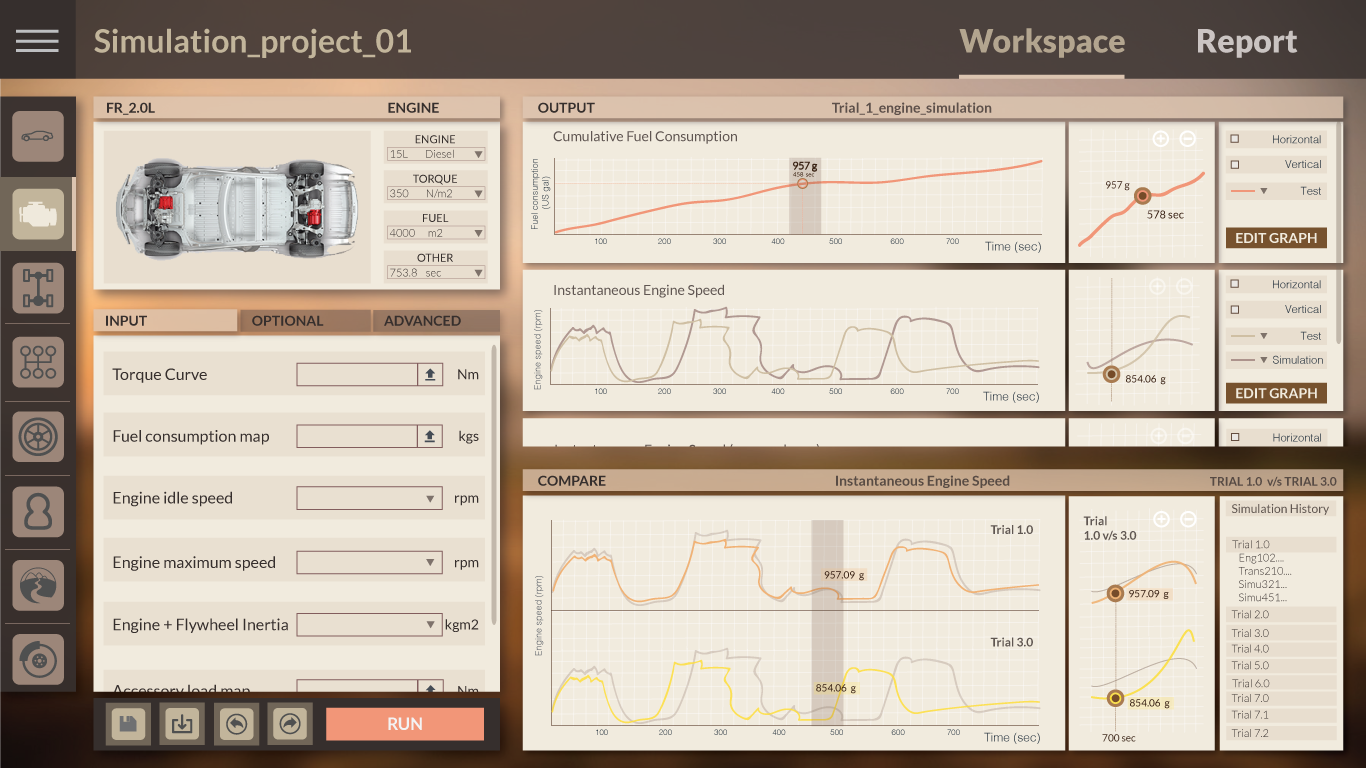Dashboard Design for Automotive Industry
Role
UX Design Lead, UX Researcher
Methods/Skills
Interview
Comparative Analysis
Brainstorming
Prototyping
TIME
Jan. 2016 - Apr. 2016
Client
CSEG, Computational Sciences Experts Group
Brief
CSEG is a local start up in Ann Arbor, offering engineering services consultation to automotive industry. They want to design a dashboard interface (also called simulator) which brings engagement and achievement to engineers. This product should be able to run the simulation and have the functionality of graph manipulation for engineers and their managers.
*This project participated in UMSI Innovator Award competition and won 2nd place.
Design Process
Challenge
As a UX Design lead, the first challenge came to me is that most of the team members came with a background in information science but not in mechanical engineering. Without a basic understanding of how engineers think and behave will be very difficult to generate design solutions tackle to specific needs. Thus, the first thing we concluded was to conduct user research through interview and observation.
User Research
As the only team member with a mechanical engineering background, I was the one in charge of planning user research and transferring mechanical specifications into product features.
In order to understand the needs, desires and behaviors of the engineers working in the automotive industry, 6 user interviews/observations were conducted. By analyzing the data, we discovered critical findings which served as product features and important insights for UX recommendations.
Major takeaways from the user research:
1. Engineers prefer to see numbers.
2. Engineers want the capability to customize output table layout
3. Engineers compare the output (vehicle performance) frequently.
4. Engineers hate entering inputs multiple times.
5. Engineers want to zoom in to check for a specific region/point and want to be capable of manipulating the output graph.
Comparative Analysis, Brainstorming & Sketching
After capturing the spirit of automotive industry, we began researching design solutions not only inside the engineering field but from other fields, including marketing and healthcare. We focused our research on two aspects: Data Visualization & UI Design.
1st version of MID-to-hi-fi Mockup
After researching current design solutions and information structure, we gathered and discussed about possible design solutions as a team. The first thing we agreed on was that since this product serves two different types of purposes: run simulation (for engineers) & present data (for managers), we designed two tabs (workspace & report) to separate these two functions. Also, in order to allow users to customize the layout, card layout was used. Users could drag and drop different sections to the place they preferred. While for a typical UX process, we usually continue working on creating a more detailed wireframes and low-fi mockups; however, due to time constraint and certain business requirement, we decided to jump directly to a more hi-fi look mockups. I call these deliverables as mid-to-hi-fi mockups.
2nd version of MID-to-hi-fi Mockup
In the final client meeting, we presented the mockups to our client and delivered the UX recommendation report for their reference on critical design decisions and product feature definition.
This project also participated in a design competition and won 2nd place for UMSI Innovator Award.
Conclusion & Reflection
This was a very challenging project to work on in a very short time frame (3 months) so some design phases were not able to go through and investigate. However, this was a very good experience since there are some cases that designers were asked to jump into hi-fi mockups and did the research afterwards to evaluate or validate. Although this might not be the best practice/UX process, I’ve learned how to use the resource I had and created design based on the research data I had. After all, there is no perfect design and we should all reflect our work iteratively to improve the final product quality.













